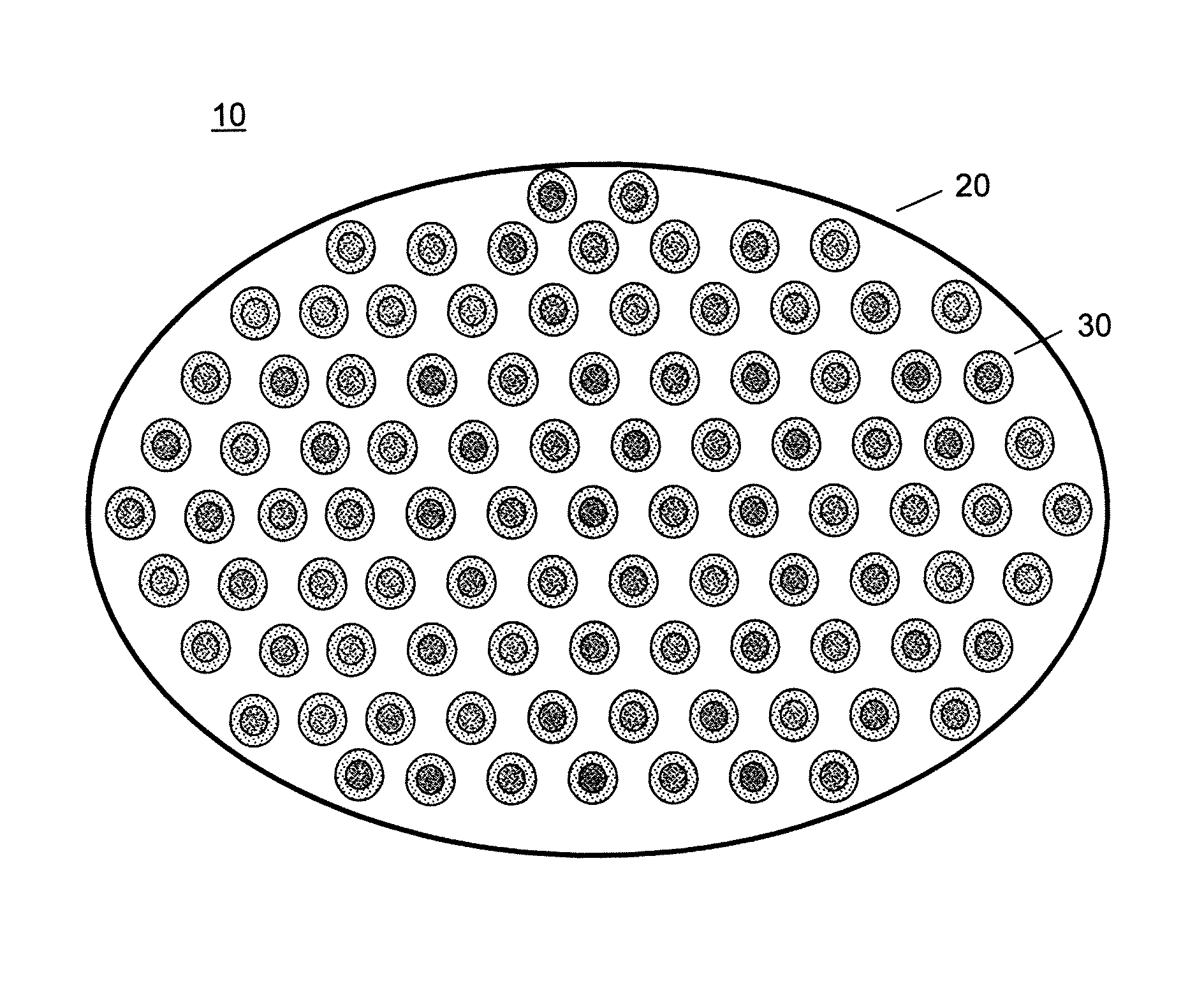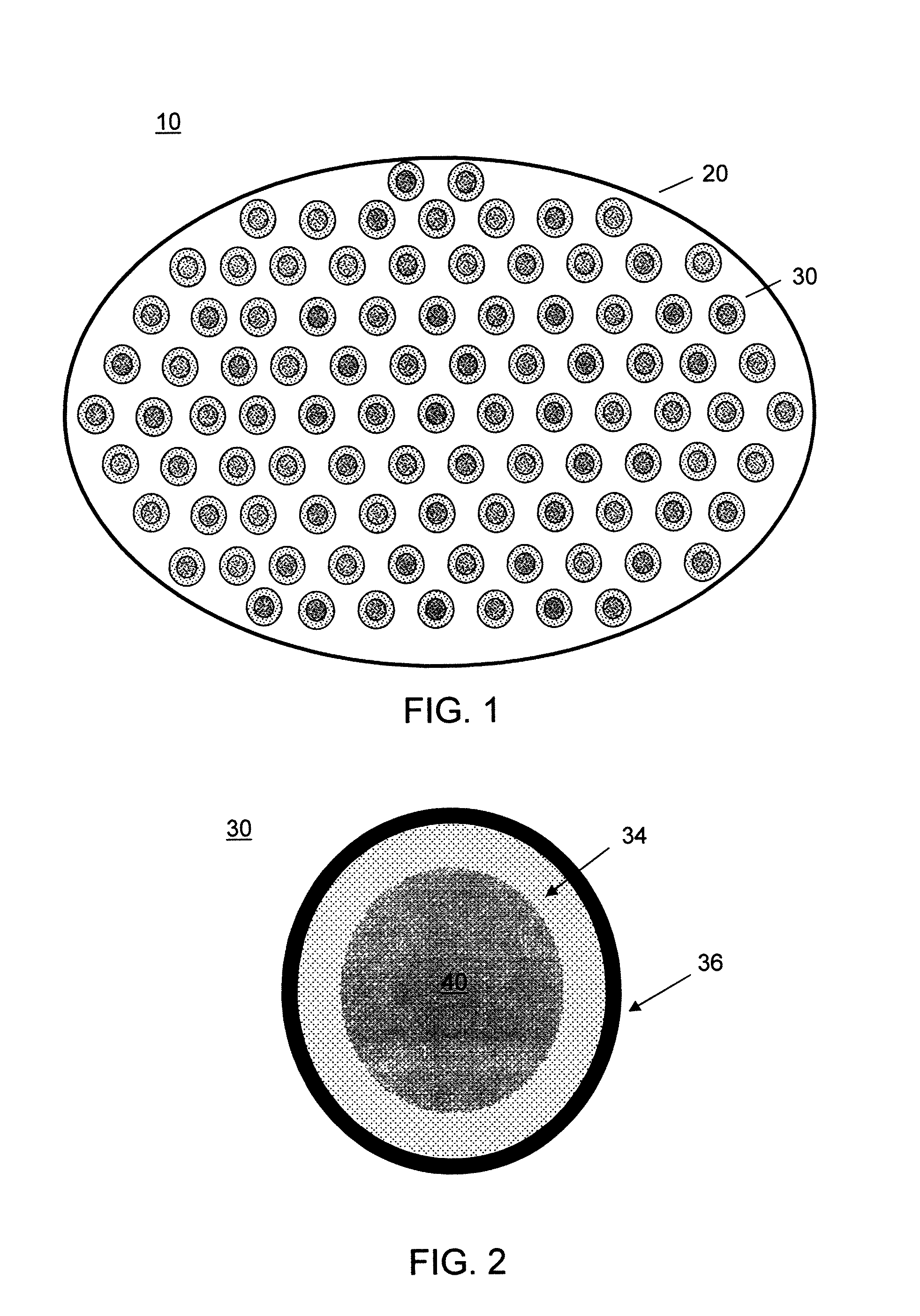Immunoisolation patch system for cellular transplantation
a technology of immunonuclear patch and cellular transplantation, which is applied in the direction of biocide, drug composition, metabolic disorder, etc., can solve the problems of reducing the effect of cellular transplantation, exposing the patient to a wide variety of serious side effects, and causing deleterious effects to the hos
- Summary
- Abstract
- Description
- Claims
- Application Information
AI Technical Summary
Benefits of technology
Problems solved by technology
Method used
Image
Examples
example 1
Pancreatic Islet Isolation and Evaluation
[0086]For the isolation of pancreatic islets, mongrel canines (20-28 kg body weight) were placed under general anesthesia following an 18-hour fast. A midline laparotomy was performed. The gastroduodenal, splenic and pancreaticoduodenal veins and arteries were isolated and a ligature was placed around each vessel. The main pancreatic duct was identified at the point of duodenal entry and dissected. A ligature was placed around the duct. An 18-gauge angiocath was inserted into the duct and the tip advanced 2-3 mm such that it remained in the main ductal architecture just prior to ductal branching in the pancreas. The catheter was sutured to the duct to secure its position. Immediately prior to harvest, the previously placed vascular ligatures were tightened and the animal was euthanized. The pancreas was transected from all peritoneal and vascular attachments and dissected from the duodenum. Once excised, the pancreas was immediately perfused ...
example 2
Microcapsule Formation
[0091]A series of capsules having a range of permeability (porosity cutoff ranging from 40 kDa-230 kDa, based on dextran exclusion measurement) was developed and characterized. The apparent pore size of the capsular membrane was determined by size exclusion chromatography (SEC) that measures the exclusion of dextran solutes from a column packed with microcapsules. Measuring permeability as a function of polymer component concentration and chemical reaction time allowed adjustment of microcapsule permeability in a controlled manner. Two-membrane microcapsule was formed. The outer membrane with strong ionic bonds formed a thin membrane with narrow pore size distributions. It has a porosity of ˜100 kDa and thickness of ˜1 micron. The inner membrane of this capsule is thicker and its pore size has broad distributions. It has a porosity of approximately 150 kDa and thickness of 20-40 microns.
[0092]Three-membrane microcapsules were also formed, in which the inner mem...
example 3
Encapsulation of Pancreatic Islets and Testing
[0093]Pancreatic islets were isolated as described in Example 1, and following islet isolation, diameter, purity, and viability testing, the islets were cultured for 48-72 hours and encapsulated with a multi-membrane microcapsule of Example 2. The insulin secretory capacity of the free islets and encapsulated islets was then determined in a cell perfusion system.
[0094]Insulin secretion by encapsulated islets was evaluated in a cell perfusion apparatus with a flow rate of 1 ml / minute with RPMI 1640 with 0.1% BSA as a perifusate. Encapsulated islets were perifused with 2 mM glucose for 30 minutes and the column flowthrough discarded. Three minute samples of perifusate were collected during a 30 minute perfusion of 2 mM glucose, a 30 minute perfusion of 20 mM glucose+0.045 mM IBMX (a nutrient), and a 60 minute perfusion of 2 mM glucose. Samples were assayed in duplicate for insulin using Coat-a-Count kits (Diagnostic Products Corporation, L...
PUM
 Login to View More
Login to View More Abstract
Description
Claims
Application Information
 Login to View More
Login to View More - R&D
- Intellectual Property
- Life Sciences
- Materials
- Tech Scout
- Unparalleled Data Quality
- Higher Quality Content
- 60% Fewer Hallucinations
Browse by: Latest US Patents, China's latest patents, Technical Efficacy Thesaurus, Application Domain, Technology Topic, Popular Technical Reports.
© 2025 PatSnap. All rights reserved.Legal|Privacy policy|Modern Slavery Act Transparency Statement|Sitemap|About US| Contact US: help@patsnap.com



